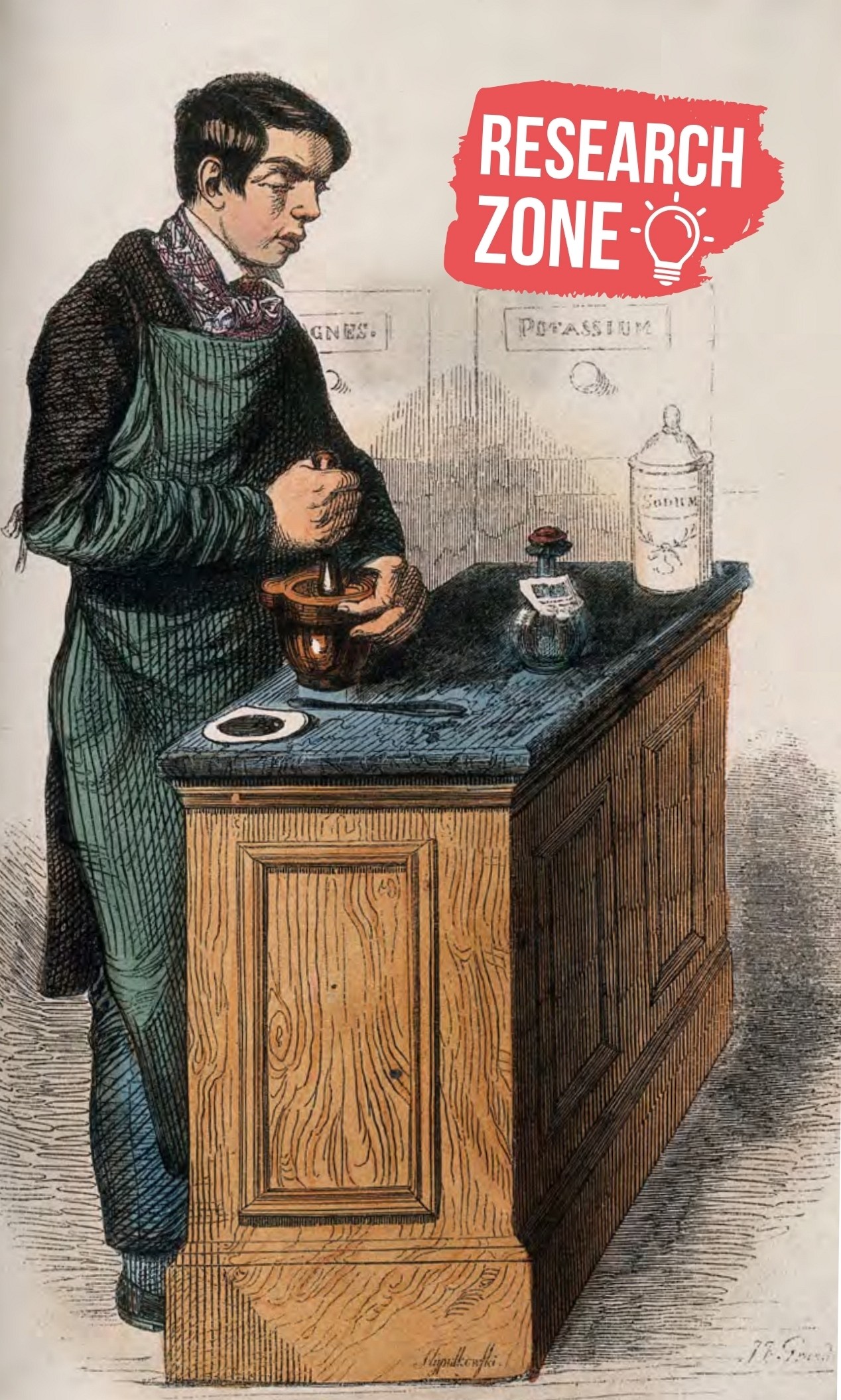
A coloured wood engraving of a pharmacist’s apprentice mixing up a prescription
Apprentices have existed since medieval times. A formal apprenticeship enabled young people to learn a craft or trade to an established proficiency, and required their parents to pay for it. The costs included the training of course, but often accommodation, food and clothing as well. There was a written contract that bound the young apprentice to a trainer, who was known as their ‘master’ (or rarely ‘mistress’). A record of this formal apprenticeship was called an indenture. It was legally binding, so both the employer and the apprentice’s parents retained a copy of it. Apprentices were overwhelmingly boys, but very occasionally girls were taken on too.